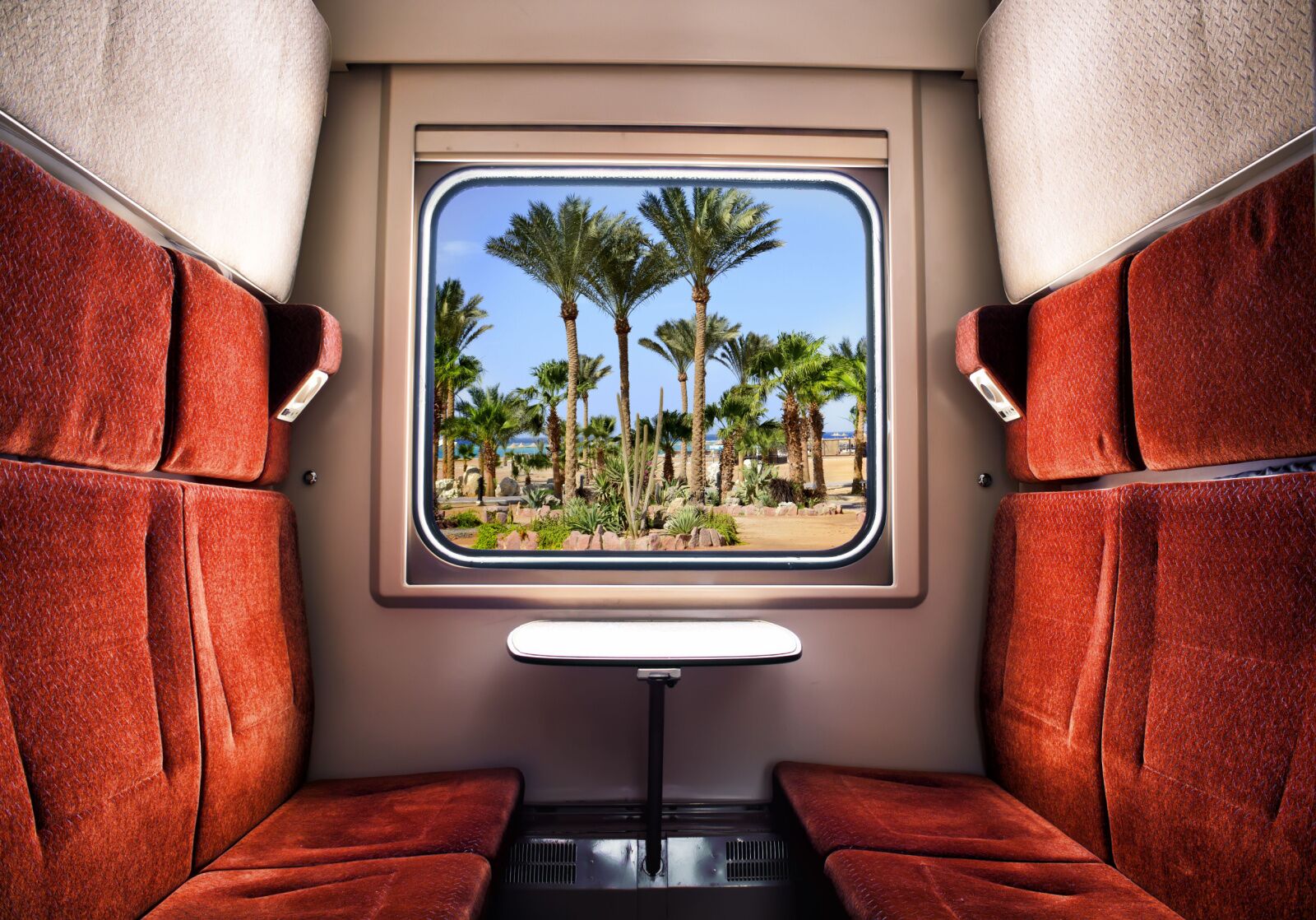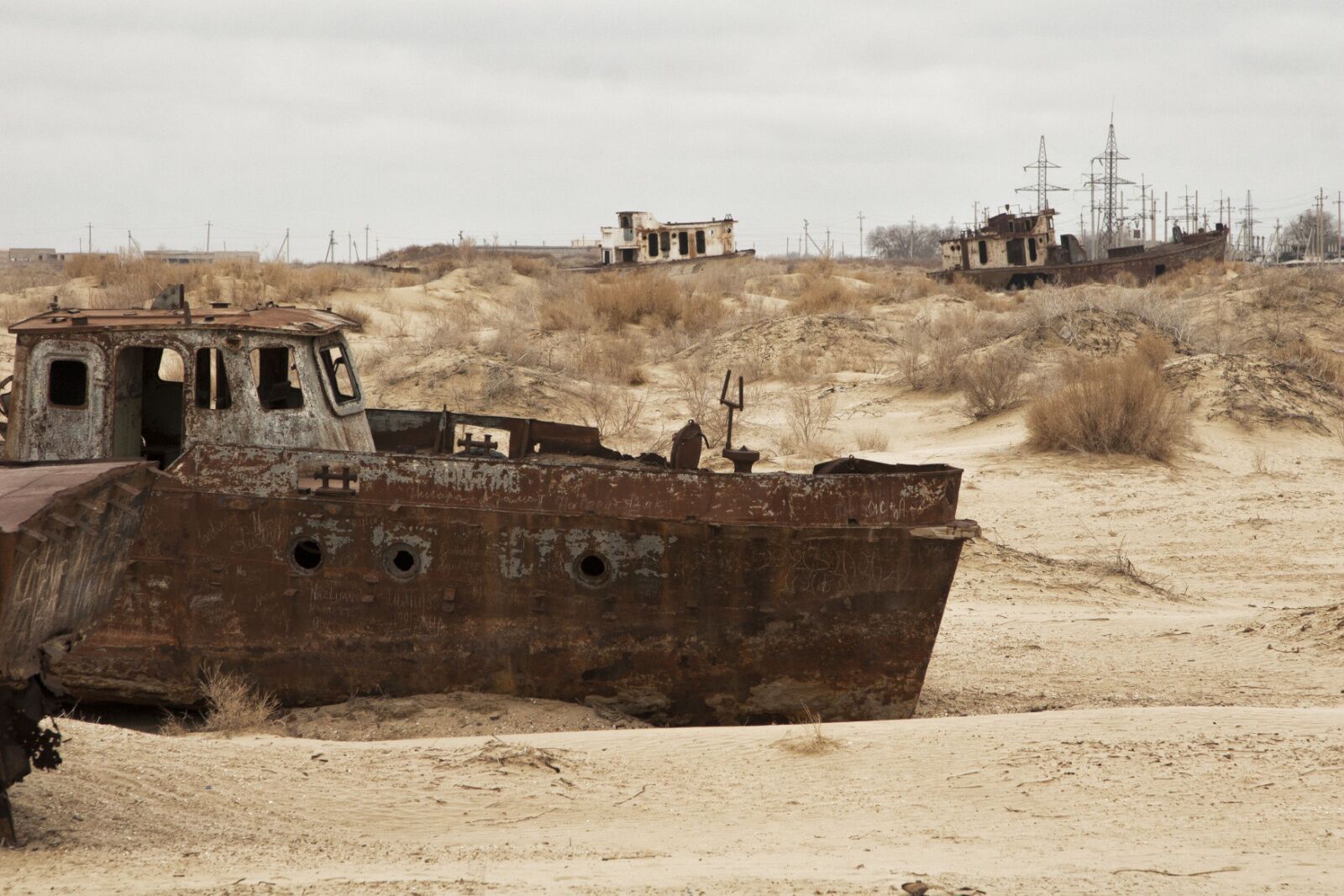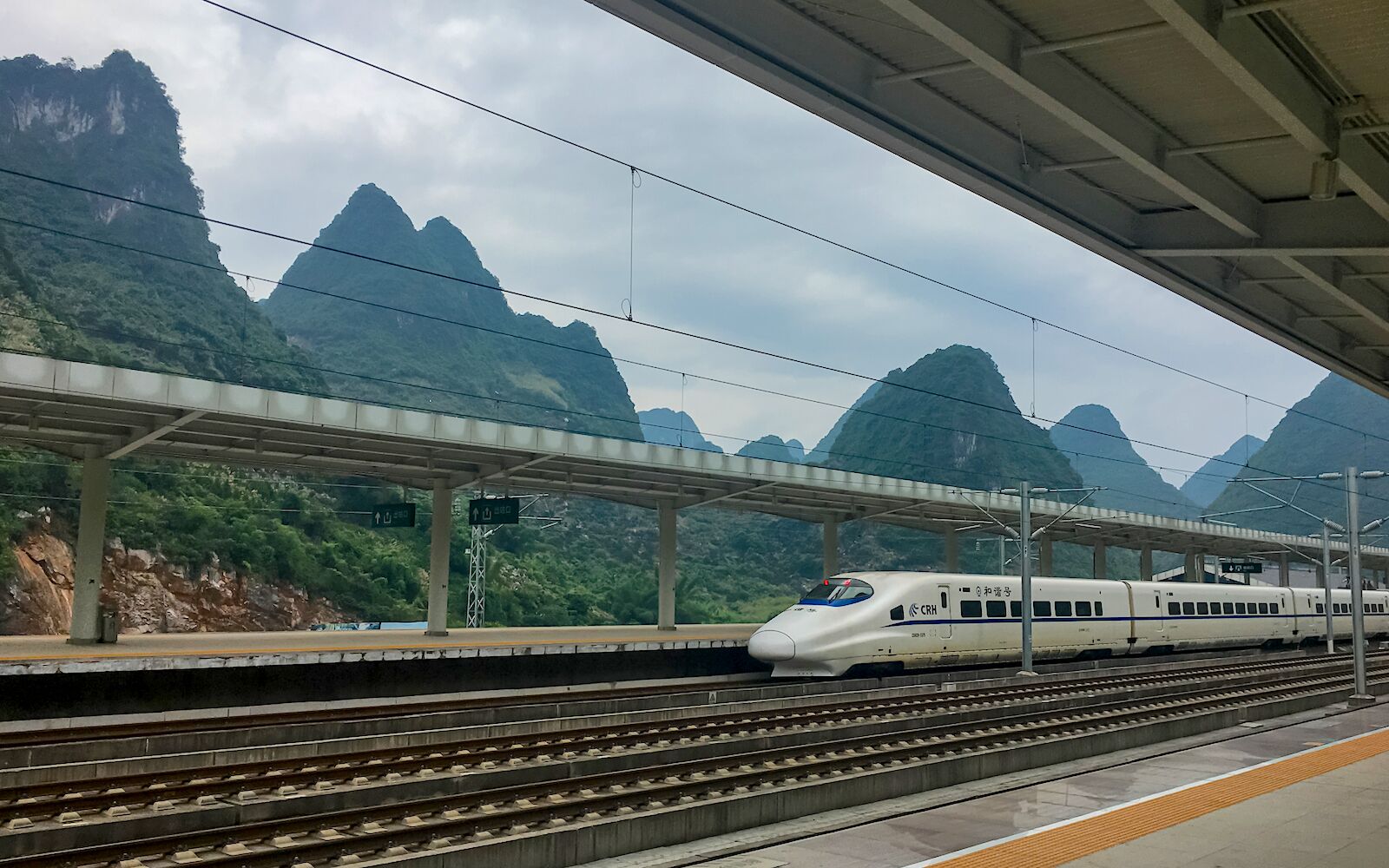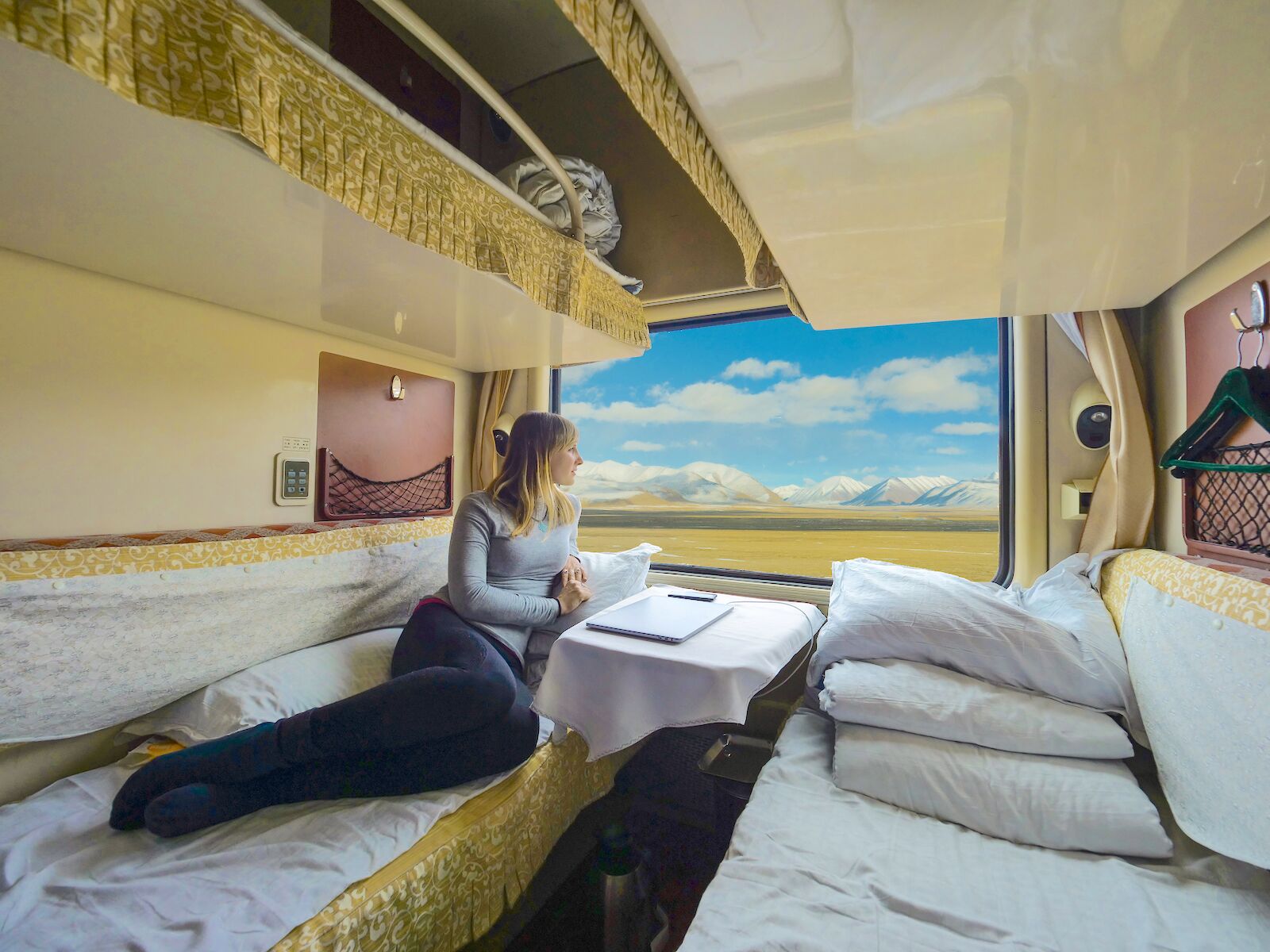“Vodka or choy?” he called across the carriage, a hand-painted floral teapot in one hand and an unmarked bottle of liquor in the other. Rising from my lie-flat bed, I gratefully accepted a cup of fragrant green tea, sharing a smile and a handful of sunflower seeds in return. “Cards?” he boomed with a childlike grin, and quickly our berth was rife with activity, the robotic voice of translation apps carrying the conversation long into the dark desert night.

Traveling by Train: 6 Reasons Why I'll Always Opt for Trains Over Planes
Had I been traveling by air, the first question would have been similar, though perhaps I would have been offered free coffee rather than vodka. But I’m not sure that would have even registered as a memory.
Unlike a quiet plane with noise-canceling headphones on most ears, aboard the sluggish sleeper train linking the Silk Road cities of Tashkent and Khiva, the carriages were alive with everything that makes travel so exhilarating: unforgettable people, unplanned moments, and those stories that turn travel journals into travel treasures.

The views afforded by train travel can’t be beat. Photo: Igor Bukhlin/Shutterstock
In Uzbekistan, it was shepherds and off-duty staff who showered me with samsas (flaky, meat-filled dough pickets) and stories of Soviet times. Onboard China’s night crossing, my memories are of a woman who offered spontaneous language lessons and gifted our group with instant noodles. And while traveling by train through Australia’s dusty interior, I remember the fellow bored backpacker who shared his single contraband can of warm beer.
These odysseys and kind people – Otabek, YoYo, Ollie, and many more – are why I now always opt for traveling by train when possible. I’ve learned that rarely is rail just about getting there; it’s a microcosm of travel itself. Sure, the journey can sometimes be slower or more costly, and at times it may demand a detour or difference in plans, but these challenges have brought me far closer to a country and its people, both literally and metaphorically, than flying ever could.
You can find camaraderie in the carriages

Photo: Daniel James Clarke
Aboard a train, especially those that sometimes seem endless, you’ll find a camaraderie it’s difficult to find elsewhere. Forgot your snacks? Someone’s got you. Out of toilet paper roll? Seat 27A has plenty. Bored with nothingness? That card-playing group in the vestibule will deal you in. On board Sri Lanka’s iconic blue train, which unhurriedly traverses the tea plantations and lush hill towns of the country’s interior, I even briefly became a babysitter while a local mother dashed off to find the roti seller mid-journey.
But it’s easy in the modern world to forget both the pleasures of riding the rails and how thoughtful strangers can be. Overcrowded or delayed commuter services are certainly not the best advert for selling the allure of traveling by train, leading many to have scheduling or personal space concerns about taking trains when traveling abroad.
The Pacific Surfliner, which partially tracks South California’s scenic coast, is a perfect example. For me, it was a highlight of my West Coast trip, partially due to a friendly couple from Austin recounting childhood tales from Texas – yet my LA friends were baffled as to why I’d pick a slow Amtrak ride over driving with them.
However, part of the allure of traveling is understanding and expecting everything to be decidedly different and new, which often also extends to the railroads. Even the train’s ancient predecessor – a Greek boat-pulling system called a diolkos – involved a crew working concurrently to pull the chariots across a land shortcut. It’s a testament to how teamwork has powered train travel for millennia.
Traveling by train? Hello, Wi-Fi and better meals

The author’s on-the-rail work set-up. Photo: Daniel James Clarke
Conversations with citizens and fellow travelers aside, traveling by train brings plenty of other connection-based benefits – the most notable of which is Wi-Fi.
Unlike the shaky, sporadic, or often non-existent service on planes, when you stay on land, you can connect to the onboard service or tether from your cell phone’s hotspot (just remember to pack that power bank). Wi-Fi will come in handy when you want to watch movies, listen to music, or download a translation app to chat in real time with your seatmates. There are as many reasons to be online as to disconnect while traveling.
But Wi-Fi is far from the only advantage of staying grounded, though. The ability to roam freely at all times (with no little lights dictating when you are and aren’t allowed to visit the restroom), that much-needed extra legroom, and the possibility to step off and breathe fresh air whenever a station tumbles into view are many of the little pleasures of traveling by train. And connecting two amazing cities without any airport lines or waits is usually equally welcome.
Arguably, though, there’s one part of the train where the ability to move freely, to connect with other travelers, and to stretch your legs all meet up to create the best place on board: the dining car.
A meal in these mingling spaces can be as eclectic as surprisingly varied dishes, providing the perfect intermission to any prolonged journey. Whether it was charcuterie while crossing Spain’s agricultural forests, or tangy chicken noodles against the backdrop of Southern China’s rice paddies, I’ve found that meals while traveling by train offer the chance for the perfect travel pairing: beers and banter with strangers.
Even if you’re more of a “first-class bar in the Airbus 380” type of plane traveler (lucky you), these restaurants on wheels often surpass all expectations. Dining cars allow travelers to sip pisco sours in the observatory car of Peru’s luxury Andean Explorer or indulge in a four-course wine-pairing meal aboard the Rovos Rail. After that, it’s hard to go back to microwaved, pre-packaged airplane food – and that’s not even considering the cinematic scenery that serves as your backdrop.
Enjoy the scenery while someone else does the work

When it comes to scenery, trains can’t be beat. Photo: Daniel James Clarke
It’s not just epic overnighters and border-hopping adventures that make traveling by train so addictive. It’s also the chance to forgo any work, leaving the satellite navigation and stick shift behind. Someone else does the driving; you simply soak up the scenery.
Some of the most memorable train trips I’ve taken haven’t really gone anywhere, allowing the panoramas to take priority. That’s the case with the expansive windows of Portugal’s Douro line, which frame the steep vineyards of the world’s oldest wine appellation as it trundles along, pausing for wine tastings and river walks before returning to the station. Ditto for Italy’s Cinque Terre train line, linking five of Italy’s most spectacular coastal cliffside towns with ease. Both allow would-be designated drivers to avoid dashing their romanticized Portugese or Italian road trip dreams.
After your first introduction to riding the rails, you’ll likely be hooked and ready for more grand scenic adventures. Whether it’s the mountain-hugging Machu Picchu Rail, the Rocky Mountaineer’s glass-roofed train cars through the Rocky Mountains or the Glacier Express as it crosses the Swiss Alps, I promise there’s nothing more timeless than watching from your seat as a country’s landscape slowly shift from one beautiful scene to the next.
Train travel reduce your carbon footprint

Photo: ViiviienM/Shutterstock
Looking out at the world’s most awe-inspiring landscapes from the comfort of your seat leaves time to study and contemplate the beauty of the natural world. And for most people, that leads to an increased consciousness of the need to help preserve those delicate and extraordinary environments.
For me, the most notable sustainability shift came at the end of my unhurried night train in Uzbekistan, when I found myself standing where the Aral Sea – once the world’s fourth-largest freshwater lake – should have been. Yet, rather than having wet feet, I was surrounded by endless sand and shipwrecks no longer anywhere near water.
At that moment, I pledged to fly far less often. I’m currently on a 13-country, flight-free trip inspired by that haunting Aral Sea experience. And I’m not alone. The realization that we need to rethink travel has become an everyday conversation for many. Traveling by train releases between 6 and 42 times less CO2 than flying per person per kilometer traveled. That makes it the mass transport option with the lowest CO2 emissions, so shifting to trains instead of planes is one of the easiest and most impactful travel changes you can make.
Traveling by train can be faster than flying

A high-speed train in China. Photo: Daniel James Clarke
But even if saving the world isn’t top of your agenda, traveling by train delivers plenty more savings.
With more high-speed train routes launching around the world, particularly across Europe but also in countries like India, train travel can sometimes be quicker than flying, especially when you account for transfers, check-in lines, airport security, and delays at chaotic airports. In recognition of this, France has even gone so far as to recently ban short-haul domestic flights, raising the question of whether more nations will follow suit.
Traveling by train is a better bang for your buck

Photo: Flystock/Shutterstock
In some countries, traveling by train saves not just time, but also money, with the added perk of waking up where you need to be. In many countries, you can book a ticket for a lie-flat bed for a price closer to a cup of coffee than an eye-watering red-eye flight, or even a moderately priced hotel room. My sleeper train across the Silk Road set me back about $14. Overnight sleeper trains mean you can avoid expensive hotel fees, check-in luggage charges, and the cost of getting to and from an airport. Train stations are usually much closer to city centers than airports, making getting to your train usually much easier than getting to the airport.
That said, of course, it’s not always smiles and smooth sailing.
Tips for traveling by train: mitigate the negatives and temper your expectations

The author in front of a budget car on the otherwise luxurious Ghan in Australia. Photo: Daniel James Clarke
I’ll be the first to put my hands up and admit there’s a temptation to romanticize train travel and see it through rose-tinted glasses, even as someone who spent many years suffering overflowing rush-hour train commutes around London.
But as with all things travel, the remarkable must be balanced with the bad, or at least the uncomfortable. Rail isn’t immune to delays and cancellations, and the lack of speed, indirect routes, and occasionally higher prices are just some of the factors stopping train travel from becoming mainstream for many travelers.
I’d also love to say that traveling at ground level is the great equalizer, but different classes and cars do sometimes mean that tourists and visitors are separated from locals, especially if you’ve got a private cabin to cocoon yourself in.
Higher classes and more acceleration don’t always translate into better experiences. On Sri Lanka’s Blue Train, the air-conditioned tourist cars lacked both local conversation and oversized windows, the very things that could make that journey so remarkable. In Japan, the ubiquitous high-speed Shinkansen means travelers might opt to skip some of the side journeys I found most special, like riding on the open-sided cars on the coastal Gomen Nahari Line.

Opting only for high-speed trains means you’ll miss some slower sights along more winding, less-direct lines. Photo: Jumpei Hosoi/Shutterstock
I’ve also been on train rides that were long and painful, such as in Australia, on the famous Ghan. But with the Ghan’s legendary service very much limited to the luxury cabins, by the 20th hour of my trip in a budget backpacker seat, I was swearing I’d never board a train again.
Research, planning, and packing your patience and conversation skills alongside a good book will mitigate most of these negatives, while a slight shift in perspective can also work wonders. Now I see random new destinations as a reward for any indirect routes and horrifically early-morning arrivals as opportunities for sunrise photoshoots. And I’ve learned that the slower the ride, the more epic the stories are sure to be.
If you’re still undecided about taking to the rails for your next big (or small) vacation, I urge you to give it a try. Your inner adventurer will thank you nearly as much as the planet. And if you ever find yourself in Uzbekistan, I say ignore the suggestions of taking the new high-speed rail – instead, go slow and write your own Silk Road story on that sluggish night train instead.